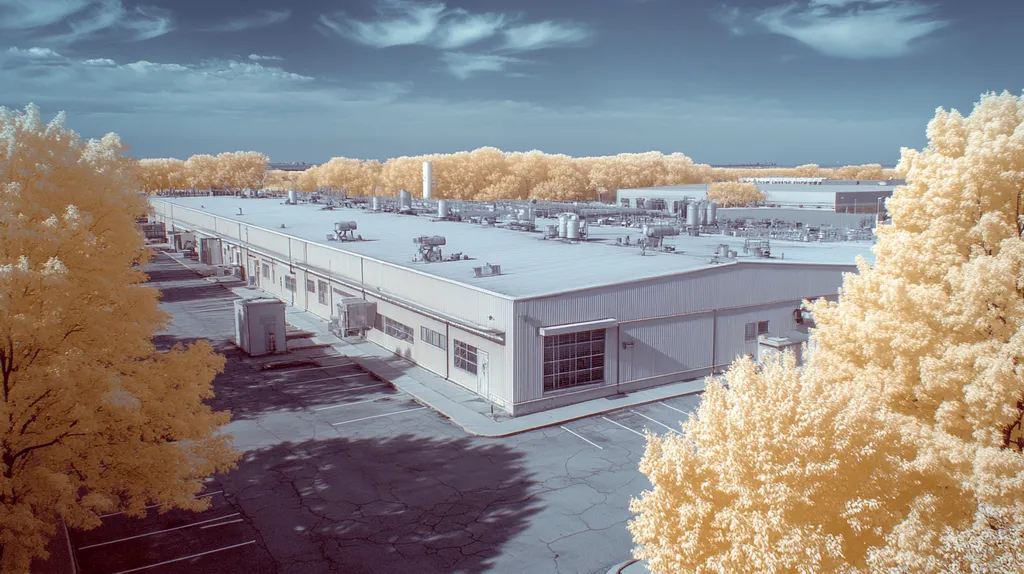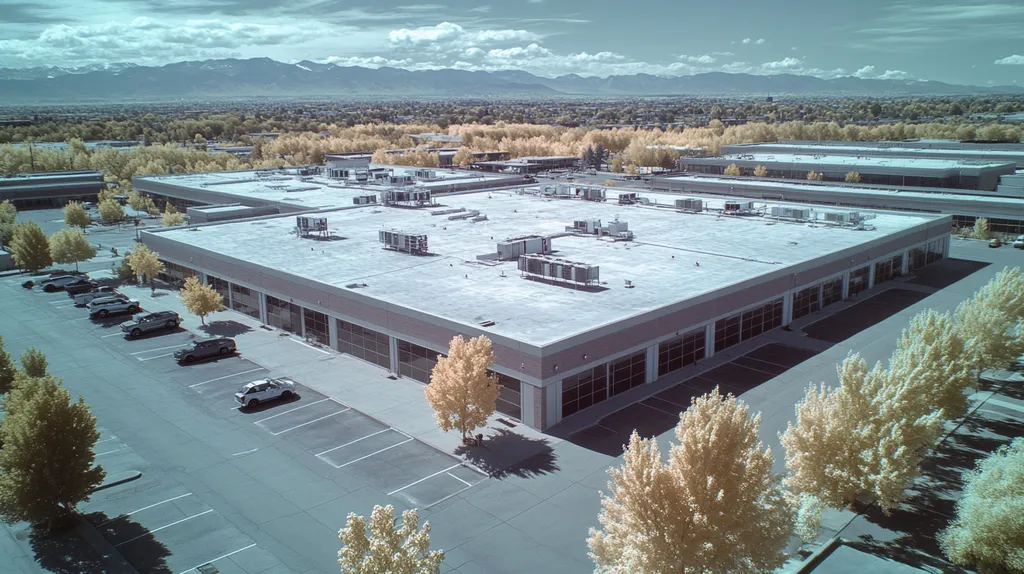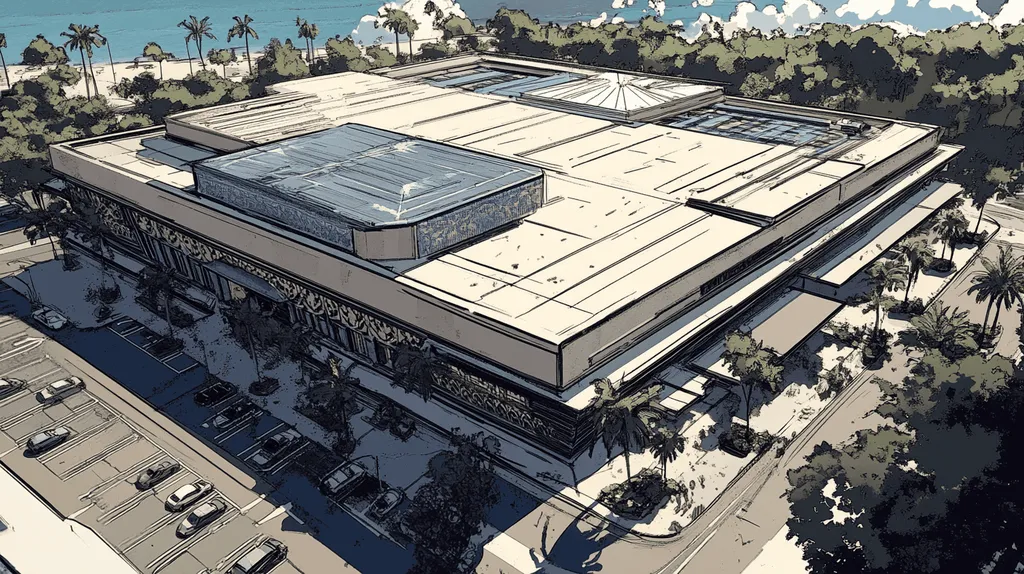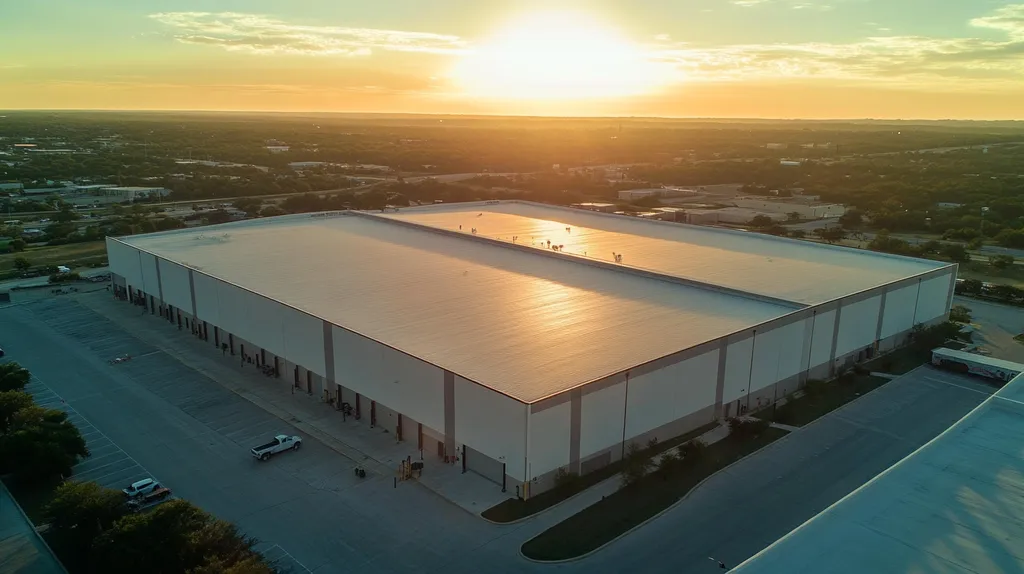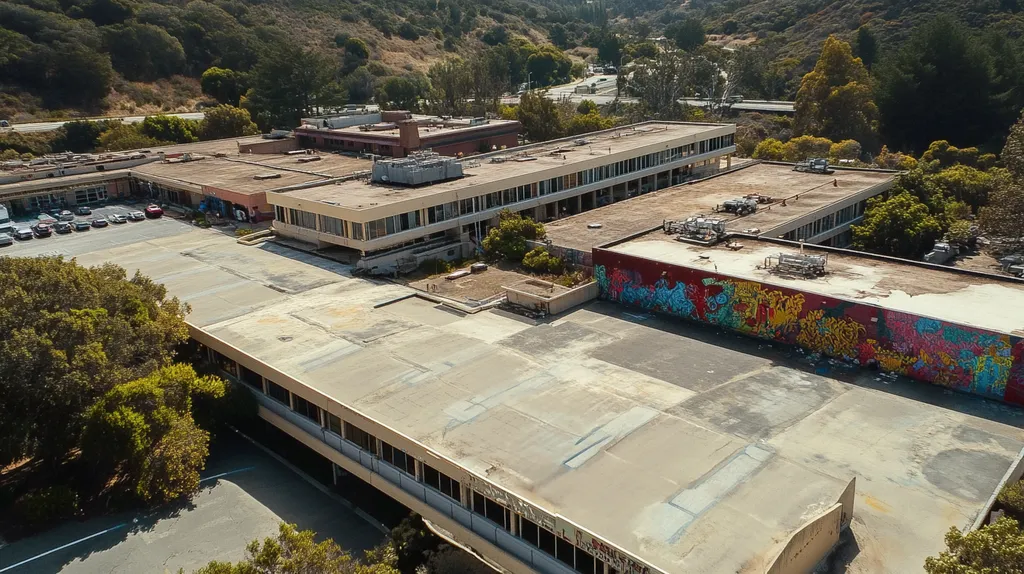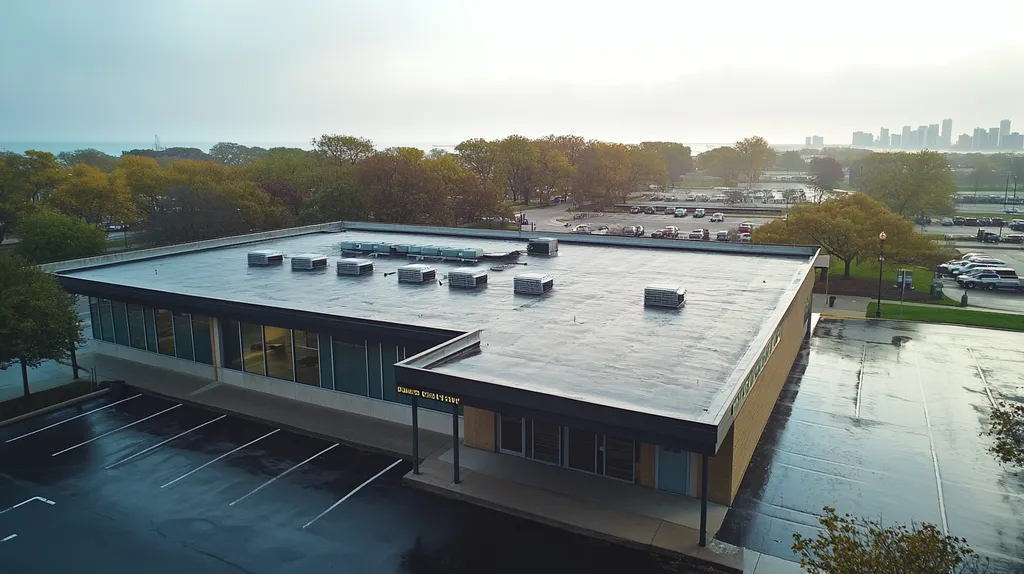In industrial roofing, a worker falls every 10 minutes, and 34% of these incidents result in catastrophic injury or death. Despite billions spent annually on safety equipment, preventable accidents continue to plague the industry.
The gap between safety perception and reality creates dangerous blind spots that put both workers and facilities at risk. Understanding which safety measures actually work – and which create a false sense of security – can mean the difference between life and death.
This article examines critical safety misconceptions in industrial roofing while providing evidence-based alternatives that protect workers and assets without compromising operational efficiency.
SECTION 1: COMMON MISCONCEPTIONS
In industrial roofing, misconceptions about safety measures contribute to thousands of preventable accidents annually. Fatal falls remain the leading cause of death in construction, with roofing workers facing four times the risk compared to other trades. These sobering statistics underscore the critical importance of addressing common safety myths that persist in industrial roofing projects.
Fall Protection Misunderstandings
One prevalent misconception is that fall protection equipment is only necessary for certain types of roofing work. However, proper fall protection is essential for all roofing activities, whether performing new installations, repairs, or routine maintenance. (source: Harnesses)
Many facility managers assume that providing basic safety harnesses fulfills their safety obligations. In reality, fall protection requires a comprehensive system including proper anchor points, compatible connectors, and body support equipment.
The effectiveness of fall protection equipment depends heavily on proper installation and regular inspection. Even the highest-quality equipment can fail if not correctly maintained or if workers aren’t adequately trained in its use.
Scaffold Safety Myths
A dangerous assumption in industrial roofing is that scaffold stability is guaranteed once initial assembly is complete. Regular inspection and maintenance are crucial, as environmental factors and daily use can compromise structural integrity.
Many project managers incorrectly believe that scaffold weight ratings provide a significant margin of safety. However, these ratings represent absolute maximums, and loads must account for both workers and materials while maintaining a safety buffer.
Another common misconception is that standard guardrails provide adequate protection in all situations. Different scaffold configurations and work conditions often require additional safety measures, including toe boards, debris nets, and proper access points.
Personal Protective Equipment Misconceptions
The belief that one type of PPE works for all roofing situations puts workers at unnecessary risk. Different roofing materials, weather conditions, and job tasks require specific types of protective equipment.
Many facility managers underestimate the importance of proper PPE training and enforcement. Simply providing equipment without ensuring workers understand its proper use and limitations creates dangerous situations.
The misconception that PPE is only necessary during active work phases overlooks the risks present during setup and cleanup. Protection must be maintained throughout all phases of roofing projects, including material handling and equipment positioning.
SECTION 2: PRACTICAL IMPLICATIONS
Industrial roofing safety isn’t just about compliance – it’s about preventing catastrophic accidents that can devastate businesses and lives. With rooftop falls causing 36% of construction fatalities annually, implementing proper safety measures is crucial. Understanding and executing practical safety protocols not only protects workers but also shields facilities from liability and operational disruptions.
Setting Up Safety Systems
A comprehensive safety system forms the cornerstone of any industrial roofing project. This includes detailed risk assessments, emergency response protocols, and clear accountability structures for all team members.
Documentation and regular auditing of safety protocols help identify potential weaknesses before they lead to incidents. These systems should include daily safety briefings, equipment inspections, and weather monitoring protocols.
Roof repairs and maintenance demand professional expertise to ensure both worker safety and structural integrity. DIY attempts often create additional hazards and can void warranties or insurance coverage. (source: Precise Roofing LLC)
Modern safety systems increasingly incorporate digital monitoring and automated alert systems. These technologies help track compliance, manage access control, and provide real-time hazard notifications.
Implementing Fall Protection
Effective fall protection requires a multi-layered approach combining physical barriers, personal protective equipment, and proper training. Every access point needs clearly marked safety zones and appropriate protective measures.
Fall arrest systems must be properly engineered for specific roof configurations and regularly tested. This includes calculating proper tie-off points, ensuring equipment compatibility, and maintaining clear fall clearance zones.
Workers need hands-on training with all fall protection equipment before accessing any elevated work area. Regular refresher courses and equipment inspections help maintain proficiency and identify wear issues.
Mobile fall protection systems allow teams to maintain safety while moving across large roof areas. These systems must be properly configured for different roof zones and working conditions.
Ensuring Hazard Communication
Clear communication protocols establish how safety information flows between all project stakeholders. This includes standardized signage, proper labeling of hazardous materials, and documented safety procedures.
Daily toolbox talks address immediate safety concerns and reinforce proper procedures. These meetings should cover current conditions, specific task hazards, and any changes to work zones or safety requirements.
Emergency response procedures must be clearly communicated and regularly practiced. Every worker needs to understand their role in emergency situations and know the location of safety equipment.
Digital communication systems can provide instant updates about changing conditions or emerging hazards. These platforms ensure critical safety information reaches all team members quickly and consistently.
SECTION 3: COST OF MISINFORMATION
When safety protocols are compromised by misinformation, the consequences ripple through every aspect of industrial roofing projects. Each year, roofing accidents result in over $1 billion in combined losses across medical costs, legal expenses, and project delays. Understanding these impacts is crucial for facility managers and property owners who must balance safety investments against operational budgets.
Financial Consequences of Accidents
A single roofing accident can trigger catastrophic financial losses. Direct costs typically start at $50,000 for minor injuries and can escalate into millions for serious incidents involving multiple workers or fatalities.
Legal expenses often dwarf medical costs, especially when accidents result from inadequate safety measures. These expenses include settlement payments, legal defense fees, and expert witness costs.
Insurance premiums typically increase by 50-100% following serious safety incidents. These elevated rates often persist for three to five years, creating ongoing financial strain.
Project delays resulting from accidents add significant indirect costs through idle equipment charges, missed deadlines, and contractual penalties.
Cost of Non-Compliance
OSHA penalties for serious safety violations start at $14,502 per incident and can multiply for each affected worker. Willful or repeated violations can result in fines exceeding $145,027 per occurrence.
Stop-work orders from regulatory authorities halt all revenue-generating activities while still requiring payment of overhead costs. These shutdowns average 3-5 working days but can extend to weeks.
Non-compliance violations become public record, affecting a company’s ability to secure government contracts and major commercial projects. This loss of business opportunity often exceeds the direct cost of fines.
The cost of bringing operations back into compliance after violations typically requires significant investment in equipment upgrades, training programs, and safety consultants.
Impact on Business Operations
Safety incidents disrupt workflow patterns and reduce productivity across entire project teams. Even minor accidents can reduce crew efficiency by 25-30% for several weeks following the incident.
Employee turnover increases significantly when workers perceive safety measures as inadequate. Replacing experienced roofers costs an average of 150% of their annual salary in recruitment and training expenses.
Project timelines extend by 20-30% when crews must be reassigned or replaced due to safety incidents. These delays create cascading schedule conflicts across multiple projects.
Client relationships suffer lasting damage when safety incidents occur, often resulting in the loss of maintenance contracts and future project opportunities. The resulting revenue impact can affect business stability for years.
SECTION 4: REALITY CHECK
Industrial roofing safety demands a stark confrontation with reality. Each year, over 50 workers lose their lives in preventable roofing accidents, while thousands more suffer serious injuries. Beyond the human toll, these incidents cost facilities millions in liability, lost productivity, and regulatory penalties. Understanding the true scope of roofing safety requirements isn’t just about following rules – it’s about protecting lives and safeguarding business continuity.
Understanding OSHA Regulations
OSHA fall protection requirements exist at the core of industrial roofing safety. Fall protection equipment is essential for all types of roofing work, whether performing maintenance, repairs, or new installations. (source: Harnesses)
Personal fall arrest systems must be properly engineered and maintained for specific roof configurations. This includes calculating appropriate anchor points, ensuring equipment compatibility, and maintaining clear fall zones.
Documentation requirements extend beyond basic safety protocols. Facilities must maintain detailed records of training, equipment inspections, and incident reports to demonstrate ongoing compliance.
Regular safety audits help identify potential violations before they result in citations. These proactive assessments often reveal critical gaps in fall protection systems that could lead to accidents or penalties.
Real Risks in Roofing Projects
Physical hazards on industrial roofs extend far beyond fall risks. Workers face dangers from electrical systems, fragile roof sections, and hazardous materials that require specialized protective measures.
Environmental conditions multiply these risks exponentially. High winds, extreme temperatures, and precipitation can transform routine tasks into high-risk operations requiring additional safety protocols.
Equipment-related accidents often occur when safety systems are improperly maintained or modified. Regular inspection and certification of all safety equipment must be prioritized to prevent mechanical failures.
Worker fatigue represents a silent but deadly risk factor. Extended work periods, physically demanding tasks, and high-stress environments can impair judgment and reaction times.
Safety Standards for Industrial Roofs
Comprehensive safety standards must address both active and passive protection systems. This includes permanent guardrails, temporary barriers, warning lines, and designated safe zones for material staging.
Access control plays a crucial role in roof safety. Strict protocols should govern who can access the roof, when access is permitted, and what safety measures must be in place before work begins.
Emergency response procedures require clear communication channels and practiced protocols. Every worker must know exactly what to do in case of an accident, equipment failure, or severe weather event.
Training standards must evolve with changing conditions and equipment. Regular updates to safety protocols ensure workers maintain proficiency with current best practices and emerging safety technologies.
SECTION 5: EVIDENCE-BASED ALTERNATIVES
Industrial roofing projects demand meticulous attention to safety protocols, yet traditional approaches often fall short. With roofing accidents causing 34% of construction-related deaths annually, facility managers must embrace proven safety alternatives. Modern safety systems, when properly implemented, can reduce accident rates by up to 85% while minimizing operational disruptions and protecting both workers and assets.
Best Practices for Fall Protection
Modern fall protection systems integrate multiple layers of defense, starting with permanent anchor points rated for specific roof configurations. These systems must account for both fall arrest and fall restraint scenarios, with clearly marked zones for different types of work.
Active fall protection requires sophisticated monitoring systems that track worker movement and equipment status in real-time. These systems can automatically alert supervisors to potential violations before accidents occur.
Passive protection measures include permanent guardrails, safety nets, and designated safe zones that create physical barriers between workers and fall hazards. These systems must be engineered for specific roof configurations and regularly inspected for structural integrity.
Comprehensive safety plans should detail exactly how workers will access different roof areas while maintaining continuous protection. Experienced commercial roofers minimize risk through carefully orchestrated work sequences that prioritize safety without compromising efficiency. (source: Hoyt Exteriors)
Safe Scaffold Assembly Techniques
Modern scaffold systems incorporate fail-safe mechanisms that prevent common assembly errors. These systems include color-coded components, self-locking mechanisms, and integrated stability indicators.
Load distribution calculations must account for both static and dynamic forces, including wind loads and worker movement patterns. Every scaffold configuration requires documented engineering approval before use.
Assembly procedures must follow a strict sequence with verification checkpoints at critical stages. This systematic approach prevents shortcuts that could compromise structural integrity.
Scaffold stability monitoring systems use electronic sensors to detect movement or stress that could indicate potential failure. These systems provide early warning of conditions that require immediate attention.
Effective Hazard Communication Protocols
Digital hazard mapping creates real-time visualization of danger zones and safe routes across industrial roofs. These systems update automatically as work progresses and conditions change.
Multi-channel communication systems ensure that safety alerts reach workers through both visual and auditory signals. Emergency protocols activate automatically when sensors detect unsafe conditions.
Interactive safety briefings incorporate virtual reality simulations of specific hazard scenarios. This technology allows workers to practice emergency responses without physical risk.
Documentation systems track all safety-related communications and responses, creating accountability at every level. This data helps identify patterns that could indicate developing safety issues.
SECTION 6: TEST AND VERIFY
Safety verification in industrial roofing demands rigorous attention to detail, yet 47% of roof-related accidents stem from inadequate testing protocols. Each year, improper equipment verification leads to over 300 serious injuries and millions in damages. For facility managers, establishing comprehensive testing and verification procedures isn’t just about compliance – it’s about preventing catastrophic failures that can shut down operations and destroy lives.
Conducting Safety Audits
Modern safety audits require systematic evaluation using digital tracking systems that monitor both physical conditions and worker behavior patterns. These platforms capture real-time data on equipment status, environmental conditions, and compliance adherence.
Third-party verification provides crucial oversight by identifying blind spots in internal safety protocols. Independent auditors bring fresh perspectives and industry-wide best practices that enhance existing safety measures.
Audit frequency must align with specific risk factors including roof age, weather exposure, and work intensity. High-risk environments require monthly comprehensive reviews, while standard industrial applications need quarterly assessments.
Safety audit documentation creates accountability at every level of operation. Clear reporting structures ensure findings translate into actionable improvements rather than collecting dust in filing cabinets.
Verifying Equipment Effectiveness
Equipment verification demands more than visual inspection. Load testing of fall protection systems must simulate actual use conditions, including dynamic forces and environmental stresses.
Modern testing protocols incorporate sensor-based monitoring that tracks equipment degradation over time. This data helps predict potential failures before they occur and optimizes replacement schedules.
Compatibility testing ensures all safety components work together as an integrated system. Individual pieces may pass inspection but fail when combined with other equipment under real-world conditions.
Regular calibration of testing equipment maintains accuracy and reliability. Verification tools require their own maintenance schedules and certification processes to ensure valid results.
Maintaining Compliance Records
Digital record-keeping systems create searchable databases of all safety-related documentation. This accessibility proves crucial during inspections and incident investigations when quick information retrieval can prevent penalties.
Automated compliance tracking flags approaching deadlines for equipment certifications, training renewals, and required inspections. These systems prevent critical safety requirements from falling through administrative cracks.
Documentation must include both routine checks and unusual incidents. Detailed records of near-misses and equipment failures help identify patterns that could indicate developing safety issues.
Record retention policies need to balance legal requirements with practical storage limitations. While digital storage enables longer retention, systems must maintain data integrity and accessibility throughout the retention period.
The Bottom Line
With 34% of construction fatalities linked to roofing accidents, the cost of inadequate safety measures continues to devastate the industrial sector both financially and operationally.
Evidence shows that comprehensive safety protocols, when properly implemented and verified, can reduce accident rates by up to 85% while actually improving operational efficiency.
Modern safety systems, from digital monitoring platforms to advanced fall protection equipment, provide facility managers with proven tools to protect both workers and assets.
The choice is clear: either invest in evidence-based safety measures now, or risk catastrophic consequences that can permanently cripple operations through accidents, liability, and regulatory penalties.
In industrial roofing, there is no middle ground between safety and disaster – only verified protection systems stand between success and catastrophe.
FREQUENTLY ASKED QUESTIONS
Q. What are common misconceptions about commercial roof safety?
A. A prevalent misconception is that basic safety gear alone is sufficient. Proper safety measures require comprehensive systems that include training, inspection, and maintenance, all crucial for avoiding accidents.
Q. Why are safety measures essential for industrial roof projects?
A. Safety measures prevent catastrophic accidents and protect both workers and business operations from serious liabilities. Understanding practical safety protocols shields facilities from unnecessary risks.
Q. What are the financial risks of misinformation in industrial roofing?
A. Misinformation can lead to severe accidents, triggering substantial costs in legal fees, medical expenses, and insurance penalties. The financial strain impacts project timelines and overall business stability.
Q. How can OSHA regulations enhance safety for industrial roofs?
A. OSHA regulations set strict safety standards that help ensure workers’ protection on the job. Adhering to these guidelines reduces risks and fosters a culture of safety among all team members.
Q. What are evidence-based alternatives to traditional safety protocols?
A. Modern safety systems emphasize integrated fall protection, real-time monitoring, and passive safety measures. These approaches can drastically reduce accidents while keeping workers secure during various roofing tasks.
Q. How important are testing and verification procedures for safety?
A. Rigorous testing and verification ensure that safety equipment functions properly and meets compliance requirements. These procedures help identify potential failures before they lead to accidents or injuries.
Q. What role does emergency response training play in commercial roof projects?
A. Emergency response training equips workers with the knowledge to react swiftly and effectively during incidents. This preparation can minimize injury severity and ensure a coordinated response in critical situations.

